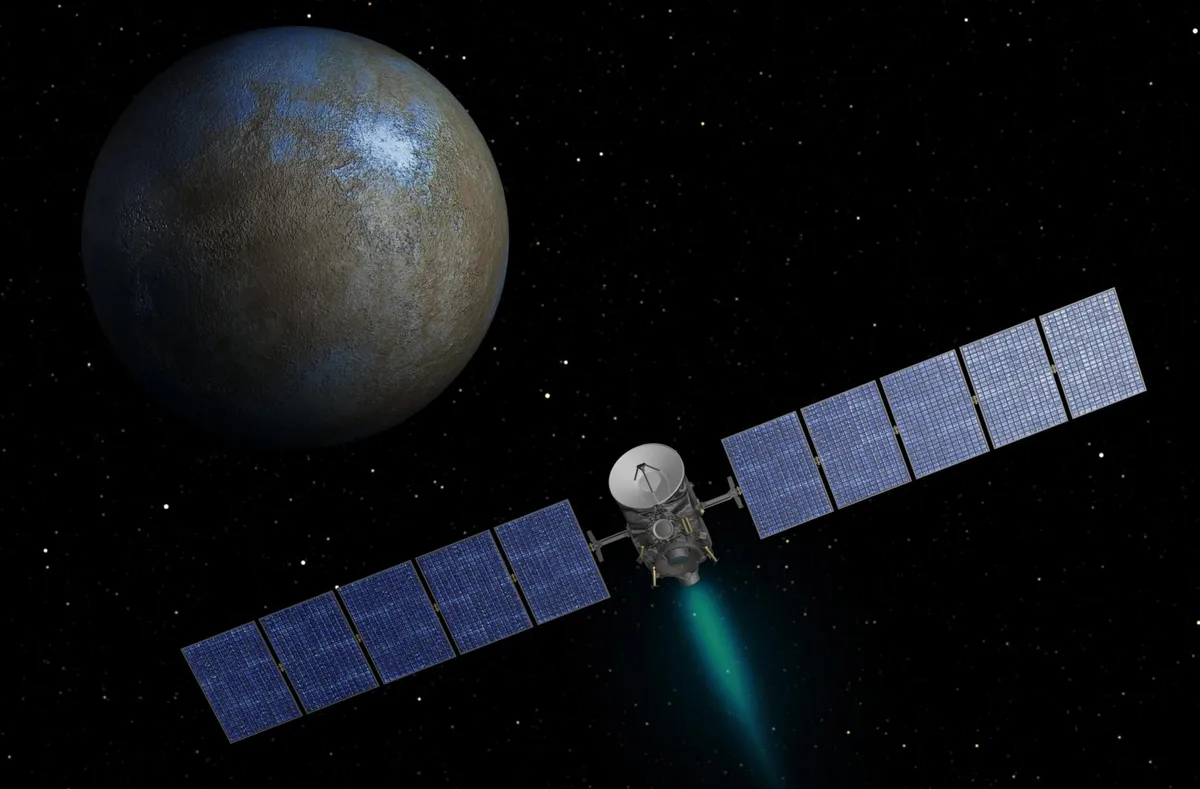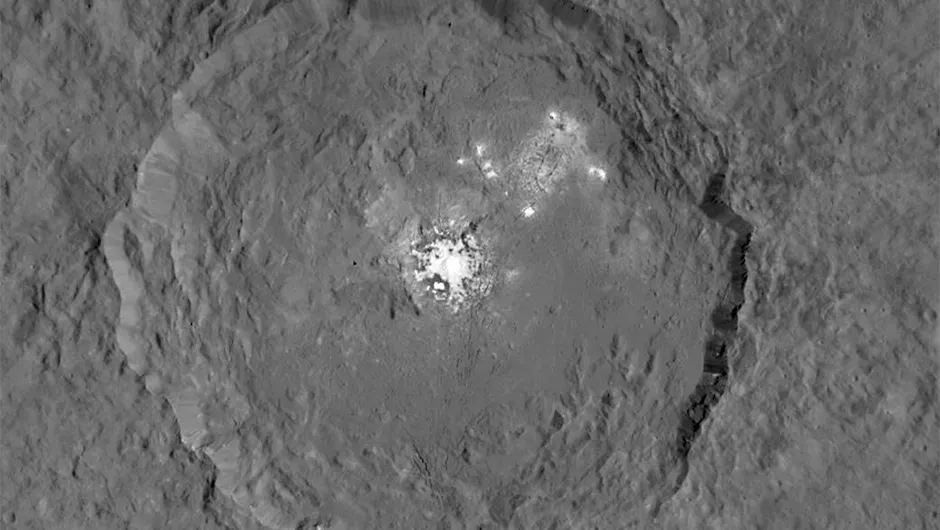Ask anyone to name a dwarf planet and the answer is likely to be Pluto. Since its discovery by astronomer Clyde Tombaugh in 1930, Pluto had been classed as a classical planet and it wasn’t ‘demoted’ to its dwarf status until 2006.
But it wasn’t the first planet to be reclassified. That honour belongs to the lesser-known dwarf planet Ceres, a 940km-wide world that has proven to pack a pretty good cryogenic punch.
How was Ceres discovered?

Ceres is named after the Roman goddess of corn and harvests (she also gives us the word cereal).
It was discovered on New Year’s Day 1801 by Catholic priest Giuseppe Piazzi at the Palermo Astronomical Observatory, Sicily.
Piazzi’s discovery was the result of a methodical search using the now discredited Titius-Bode Law, named in 1766 after German astronomer Johann Daniel Titius and popularised from 1772 by his countryman Johann Elert Bode.
This law formulaically predicted a pattern in the size of orbits of the planets and mathematically suggested that another planet existed in the gap between the orbits of Mars and Jupiter.
When Piazzi discovered this ‘missing planet’ he thought the new ‘moving star’ was a comet.
He observed its ‘slow’ and ‘rather uniform’ movement a further 24 times before becoming convinced it was not one.
He announced his sighting on 24 January 1801. At the time, it was the only known object between Mars and Jupiter, yet it soon became lost in the Sun’s glare and impossible to see.
Nevertheless, its orbit was mathematically predicted by the 24-year-old German mathematician Carl Friedrich Gauss, one of the ‘Celestial Police’ – an elite group of planet-hunting astronomers who were also making observations of Ceres.

However, they kept discovering other objects in similar orbits, and slowly the realisation dawned that they were dealing with an entirely new class of bodies.
In 1802, with the discovery of Pallas, German-born British astronomer William Herschel dubbed this new class of bodies ‘asteroids’.
In 1851 Ceres was reclassified as an asteroid and designated 1 Ceres, since it had been the first to be discovered.
We know now it is the largest of many planetary leftovers forming the asteroid belt between Mars and Jupiter, and accounts for a third of the belt’s mass.
Why was Ceres reclassified?

There Ceres remained, classified as an asteroid, until August 2006, when the International Astronomical Union (IAU) – the body responsible for astronomical nomenclature and classification – determined the three criteria necessary for an object to be defined as a planet.
These are:
- To have enough mass to be nearly rounded by its own gravity – known as hydrostatic equilibrium
- To be in orbit around a star, not be a star itself nor a satellite of a planet
- To have cleared the neighbourhood around its orbit
Failing to meet these new criteria, Pluto was demoted from being a classical planet to a dwarf planet – amid some controversy.
Ceres, however, was large enough to be rounded by its own gravity and was, therefore, officially upgraded from asteroid to dwarf planet – the only one inside Neptune’s orbit.
Vesta, once second to Ceres, took on the mantle of the largest asteroid.
What missions have explored Ceres?

Ceres has proven to be an exciting object to explore.
NASA’s Dawn spacecraft – launched 2007 – arrived at Ceres in 2015, making it the first dwarf planet visited by a spacecraft.
As it flew over its cratered surface, Dawn discovered 130 mysterious ‘bright spots’, the brightest nestling within the recently formed 92km-wide Occator crater.
Variations in the gravitational field of Ceres led astronomers to believe they were seeing signs of an underground reservoir of salty water, possibly stretching for hundreds of kilometres and reaching depths of some 40km.
It’s speculated that many millions of years ago a space rock impacted the area, and elsewhere, puncturing the icy crust of Ceres to release briny fluid from below.

The salty crust then froze over, sealing beneath it a chamber of meltwater and a cocktail of chemicals.
This later erupted – perhaps as recently as two million years ago – in the form of an icy volcano disgorging its frozen contents to splatter and dazzle the shadowy world.
Indeed, before Dawn, ESA’s Herschel Space Telescope had detected water vapour in this area.
Ceres could be composed of as much as 25% water – more than Earth. Who knows what exciting revelations future missions will reveal?
This guide originally appeared in the November 2021 issue of BBC Sky at Night Magazine.
